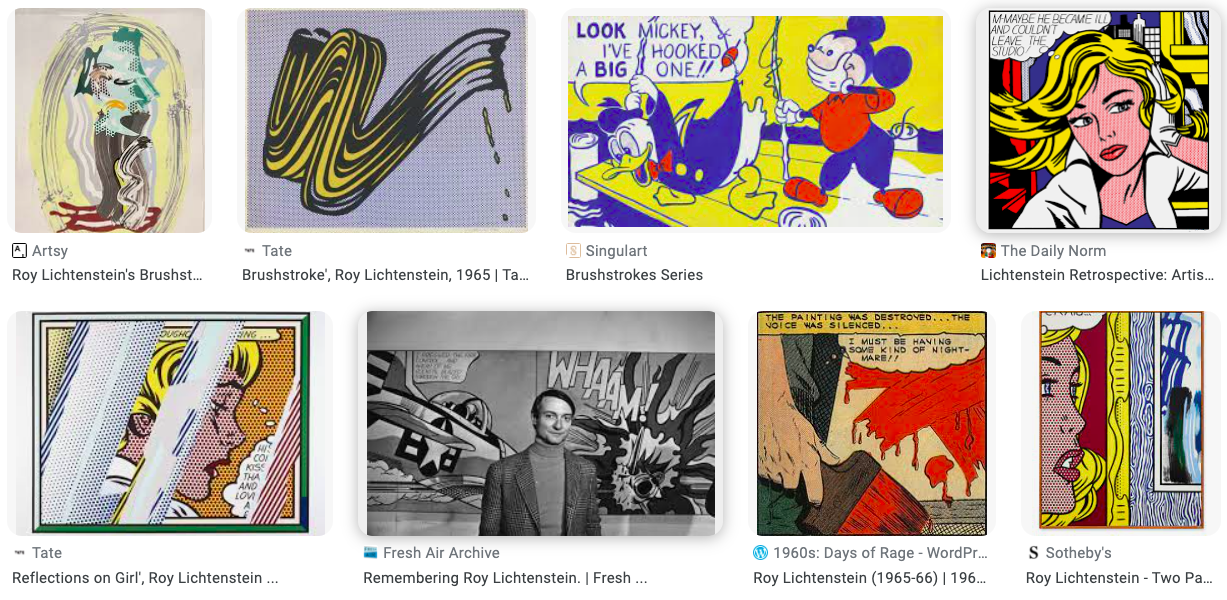
Brushstrokes of Genius: The Evolution of Roy Lichtenstein's Art and Its Reflections of Society
In the pantheon of pop art, few names shine as brightly as Roy Lichtenstein. From the bustling streets of New York City to the sun-kissed shores of the Hamptons, Lichtenstein's journey as an artist reflects not only his own evolution but also the ever-changing tapestry of American society.
Lichtenstein's artistic odyssey began in New York City, where he studied at the Art Students League and immersed himself in the city's vibrant art scene (Peters, "Lichtenstein's New York: A Pop Art Journey"). Initially influenced by the Abstract Expressionism movement, Lichtenstein began to develop a unique style marked by bold colors, clean lines, and a keen eye for capturing the essence of popular culture (James, "Pop Art and the City: Roy Lichtenstein's New York").
As Lichtenstein's career progressed, he found inspiration not only in the urban jungle of New York City but also in the tranquil beauty of the Hamptons (Mitchell, "From the City to the Shore: Lichtenstein's Dual Inspirations"). His Southampton studio became a haven where he could create in peace, drawing from the natural landscapes and the laid-back atmosphere of the region (Anderson, "Lichtenstein's Hamptons Haven: A Studio Tour").
Throughout his career, Lichtenstein's art evolved to reflect the changing cultural and social milieu. His iconic comic strip-inspired paintings captured the spirit of the 1960s, a time marked by upheaval, consumerism, and the rise of mass media (Williams, "Pop Art's Prodigal Son: Roy Lichtenstein's Connection to New York City"). By appropriating images from popular culture, Lichtenstein's work served as a mirror, reflecting the obsessions, desires, and anxieties of American society (James, "Pop Art and the City: Roy Lichtenstein's New York").
In the Hamptons, Lichtenstein's art took on a new dimension, influenced by the natural beauty of the region (Simmons, "Roy Lichtenstein: A Love Affair with the Hamptons"). His landscape paintings, such as those inspired by the Hamptons and the Hudson River, showcased his versatility as an artist and his ability to imbue even the most serene scenes with the energy and dynamism of his pop art creations (Martin, "Exploring Lichtenstein's Landscapes: From the Hamptons to the Hudson").
Throughout his life, Lichtenstein's work continued to evolve, reflecting the shifting cultural landscape and his own personal growth as an artist (Brown, "A Tale of Two Cities: Roy Lichtenstein's Life and Art in NYC and the Hamptons"). From his early days in New York City to his later years in the Hamptons, Lichtenstein's art serves as a testament to his genius and a vivid chronicle of American society during his time.
In both New York City and the Hamptons, Roy Lichtenstein's art captured the spirit of the times, immortalizing the essence of American society in bold colors and striking compositions. His work not only showcases the evolution of an artistic genius but also provides a vibrant window into the world from which it emerged. And so, as we continue to admire Lichtenstein's art, we also gain a deeper understanding of the complex tapestry of life that inspired his remarkable creations.
To increase your enjoyment of the NYC/Hamptons Society, please join our email list by visiting www.sociallifemagazine.com.